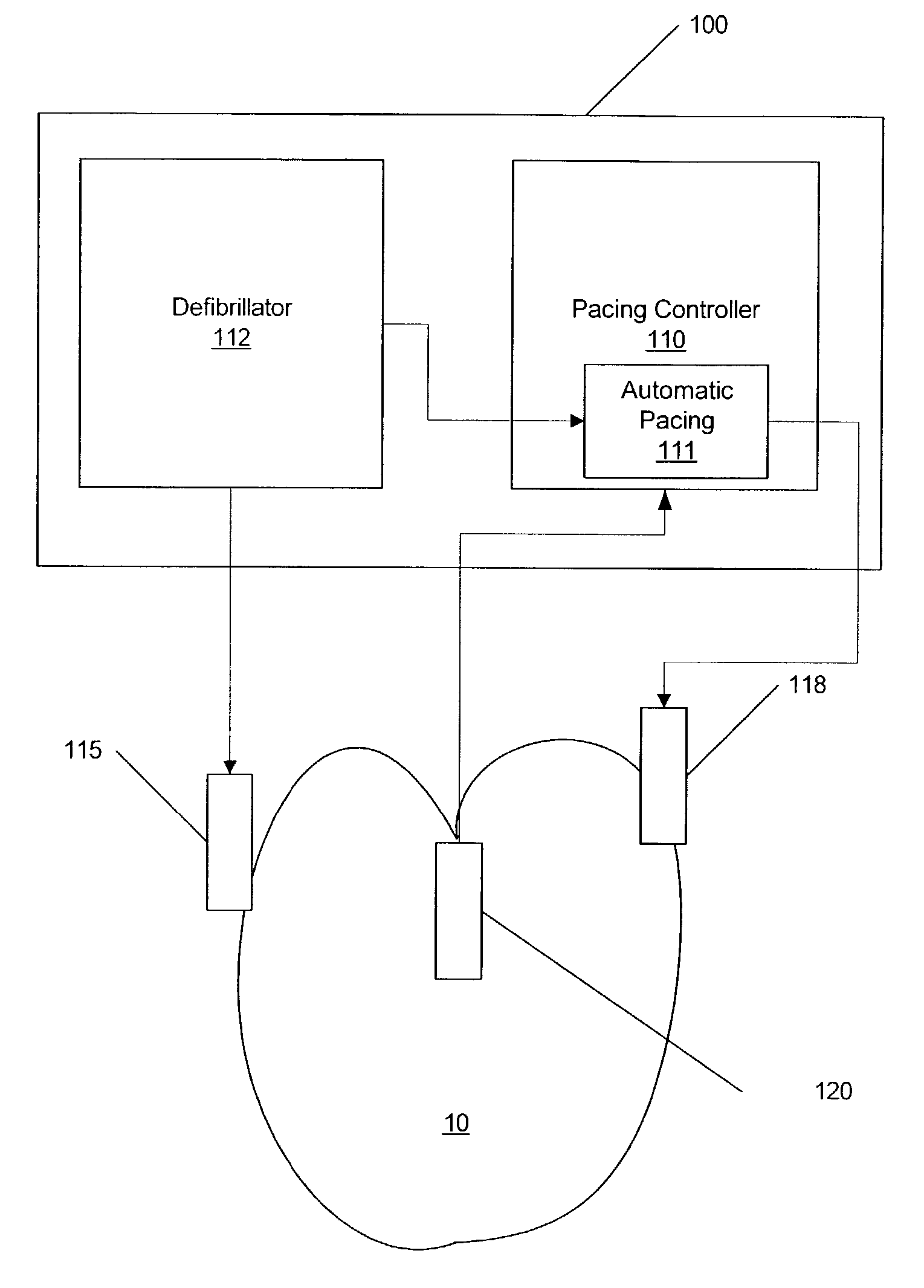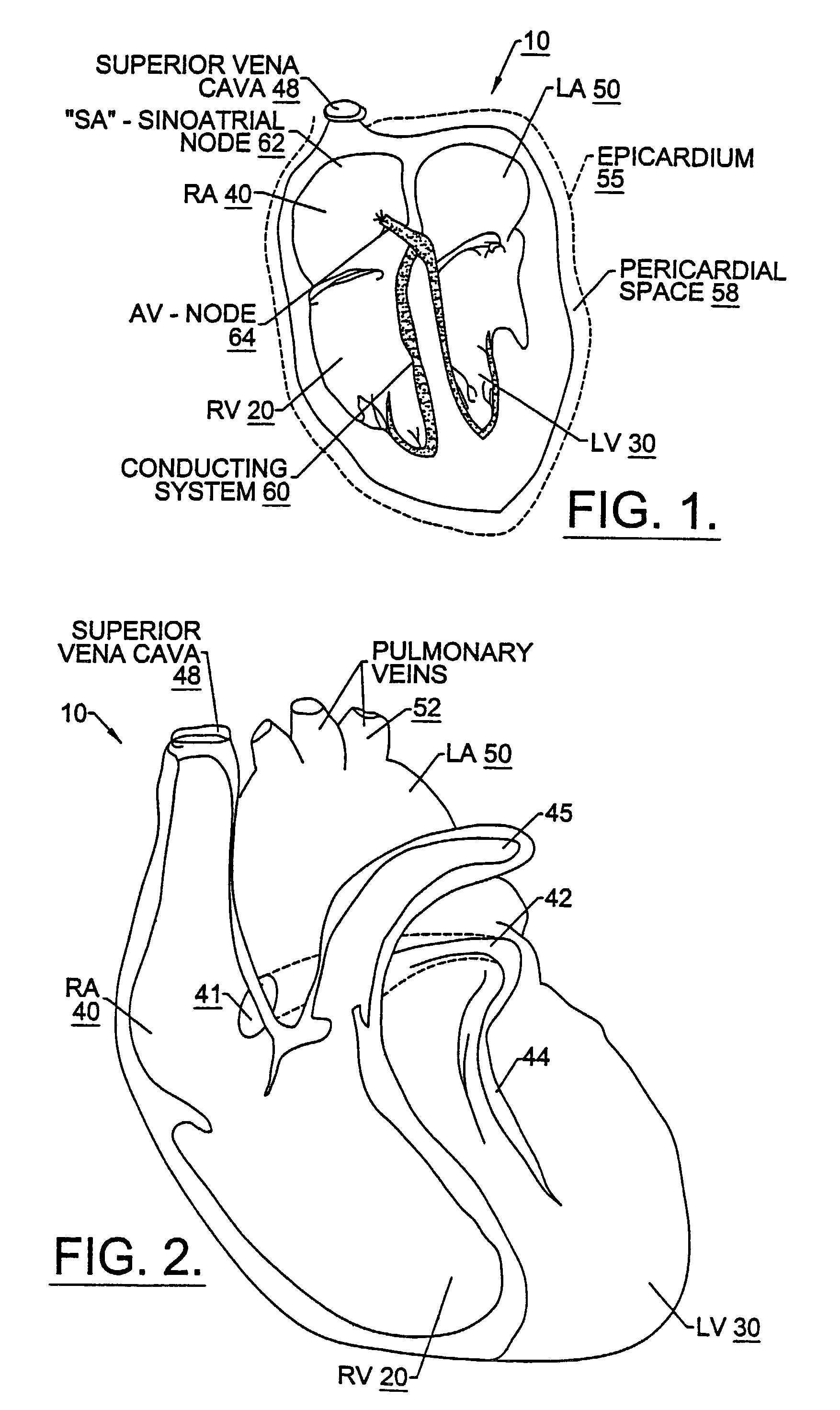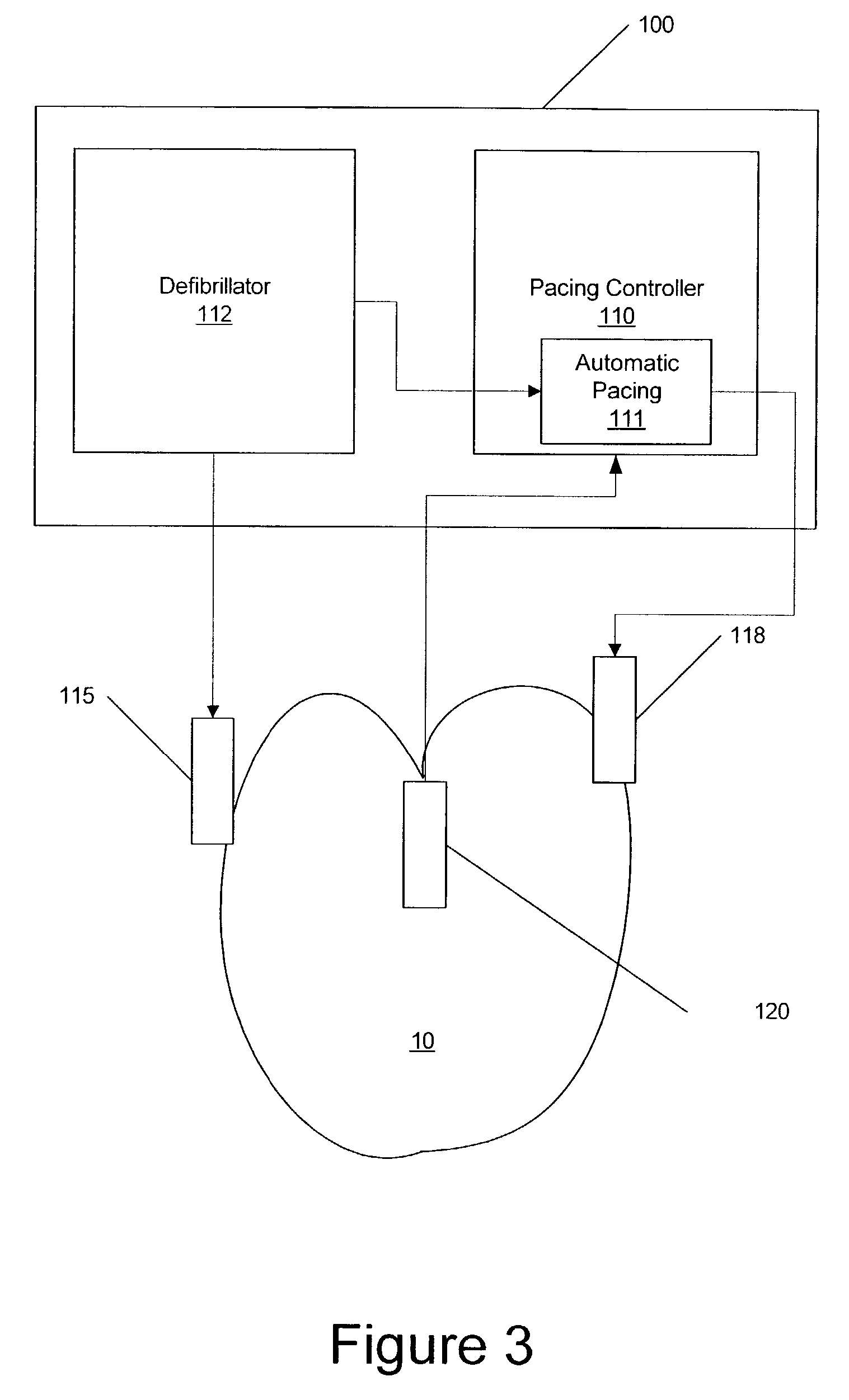Post-defibrillation pacing methods and devices
a pacing method and cardiac function technology, applied in the field of post-defibrillation pacing methods and devices, can solve the problems of recurrence of fibrillation, reduced or impaired cardiac function, and failure of defibrillation shock to stop fibrillation
- Summary
- Abstract
- Description
- Claims
- Application Information
AI Technical Summary
Benefits of technology
Problems solved by technology
Method used
Image
Examples
Embodiment Construction
[0031]The present invention will now be described more fully hereinafter with reference to the accompanying figures, in which embodiments of the invention are shown. This invention may, however, be embodied in many different forms and should not be construed as limited to the embodiments set forth herein. Like numbers refer to like elements throughout. In the figures, certain features, elements and / or components may be exaggerated for clarity.
[0032]The present invention may be used for pacing the heart after application of a defibrillation shock. Subjects according to the present invention can be any animal subject, are preferably mammalian subjects (e.g., humans, canines, felines, bovines, caprines, ovines, equines, rodents, porcines, and / or lagomorphs), and more preferably are human subjects.
[0033]Embodiments of the present invention provide for the automatic application of a pacing stimulation upon termination of a defibrillation shock. As used herein, “automatic” and “automatica...
PUM
 Login to View More
Login to View More Abstract
Description
Claims
Application Information
 Login to View More
Login to View More - R&D
- Intellectual Property
- Life Sciences
- Materials
- Tech Scout
- Unparalleled Data Quality
- Higher Quality Content
- 60% Fewer Hallucinations
Browse by: Latest US Patents, China's latest patents, Technical Efficacy Thesaurus, Application Domain, Technology Topic, Popular Technical Reports.
© 2025 PatSnap. All rights reserved.Legal|Privacy policy|Modern Slavery Act Transparency Statement|Sitemap|About US| Contact US: help@patsnap.com



